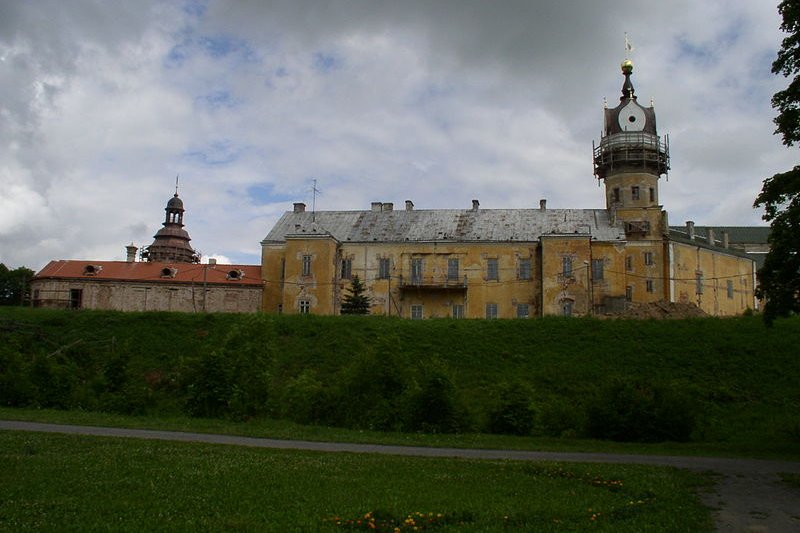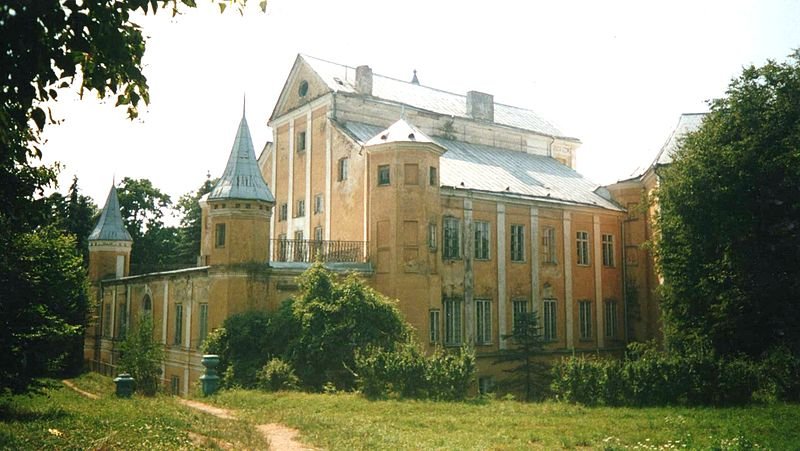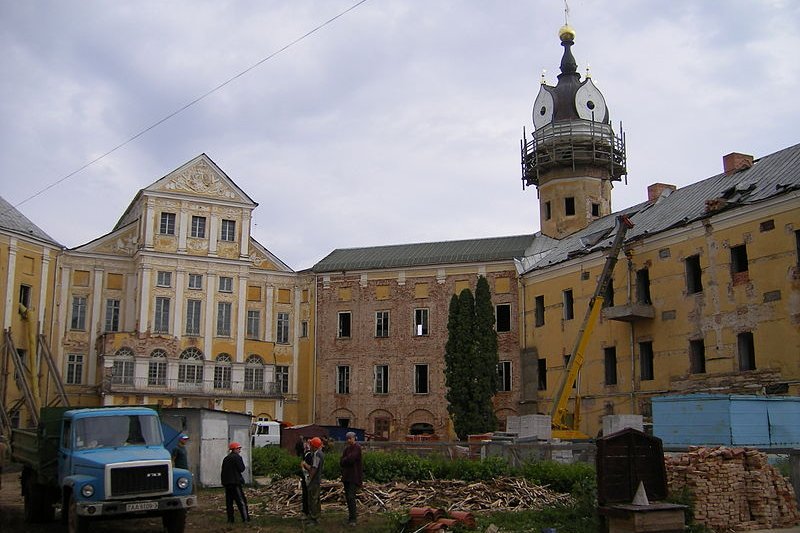 View of Nesvizh Castle on a cloudy day
View of Nesvizh Castle on a cloudy daySource: https://commons.wikimedia.org/wiki/File:Belarus-Niasvizh-Radziwill_Castle-8.jpg
Author: Alex Zelenko

The architectural, residential and cultural complex of the Radziwiłł family at Nesvizh is a World Heritage Site in Belarus. It was inscribed by the World Heritage Committee during the 29th session held in Dublin, South Africa on 10-17 July, 2005.
The Radziwiłł family is a dynasty that owned the Nesvizh complex from 1533 to 1939. It was one of the wealthiest clans in Belarus with close relationship with the Grand Duchy of Lithuania. The complex of buildings was celebrated for its influence on the sciences, arts, crafts and architecture in Central Europe, especially of the 16th and 17th centuries. The Radziwiłł family itself was noted for the interpretation of the influences from southern and western Europe and the assimilation of the ideas in central and eastern Europe.
 Nesvizh Castle
Nesvizh CastleSource: https://commons.wikimedia.org/wiki/File:Nesvizh_castle_c.jpg
Author: Recka

What to See at the Radziwiłł family complex at Nesvizh
The Radziwill Family Complex comprises Nesvizh Castle, Corpus Christi Church and several interconnected buildings, totalling about ten or so, around a six-sided courtyard.Nesvizh Castle, the residential castle of the Radziwiłł family was built by Mikołaj Krzysztof Radziwiłł, the Marshal of Lithuania. Construction of the three-storey château began in 1582 and was completed in 1604. The fortifications of a former medieval castle was remodelled into a Renaissance-Baroque style residence with octagonal towers at its four corners.
 View of Nesvizh Castle when it underwent restoration
View of Nesvizh Castle when it underwent restorationSource: https://commons.wikimedia.org/wiki/File:NiasvizhCastle2.JPG
Author: Szeder László

Linked to Nesvizh Castle by a dam over a ditch is the Church of Corpus Christi, designed by Italian architect Gian Maria Bernardoni. This is the first Jesuit temple to be patterned after Il Gesù in Rome. It is noted for being the first domed basilica with Baroque façade in the world, and the first piece of Baroque architecture in Eastern Europe. The church contains the coffin of 72 members of the Radziwiłł family, each interred in a simple birch coffin.
World Heritage Site Inscription Details
Location: N 53 13 22.0 E 26 41 29.0Inscription Year: 2005
Type of Site: Cultural
Inscription Criteria: II, IV, VI
 The Church of Corpus Christi in Nesvizh
The Church of Corpus Christi in NesvizhSource: https://commons.wikimedia.org/wiki/File:Belarus-Niasvizh-Church_of_Corpus_Christi_and_Castle_Tower-1.jpg
Author: Alex Zelenko

 Latest updates on Penang Travel Tips
Latest updates on Penang Travel Tips

Copyright © 2003-2025 Timothy Tye. All Rights Reserved.

 Go Back
Go Back